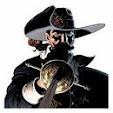In 1780, Spain and France were fighting England in the War of the Thirteen Colonies. Spanish espionage in Great Britain warned the Count of Aranda, the Spanish ambassador in Paris, of the forthcoming departure of a double supply convoy with a reduced escort. In the Azores the two convoys would separate: one would go to the Caribbean and the other to India. Aranda notified the Madrid government, where the Secretary of State, the Count of Floridablanca, ordered a powerful squadron that was guarding the Strait of Gibraltar to intercept the British convoy. The squadron was made up of 27 Spanish and 9 French ships of the line, plus several frigates and other smaller units. It was commanded by the veteran Spanish sailor Luis de Córdova y Córdova.
The convoy had left Porsmouth on July 29. At dawn on August 9, 1780, the Spanish-French squadron, maneuvering with great skill, managed to approach and intercept it at Cape Santa María, north of the Azores. The escort, made up of the 74-gun ship of the line Ramillies and two 32-gun frigates, fled. Córdova ordered a general hunt and 52 of the 58 merchant ships in the convoy were seized and taken to Cádiz, without the English fleet being able to prevent it.
The booty that fell into Spanish hands was huge: hundreds of cannons, 80,000 muskets, gunpowder, equipment for several regiments, provisions, a million pounds in gold and lingots... Near 3,000 crew members, passengers and soldiers of the royal East and West India companies were taken prisoners. When news of the disaster reached London, the stock market plummeted, making it difficult to finance the wars that the British Empire waged overseas. Most of the captured ships were sold to private individuals and several frigates were incorporated into the Real Armada.
In 1781, Córdova captured another English convoy of 24 sails (ships), this time in the English Channel, near the Isles of Scilly (in Spanish, islas Sorlingas).
Click on an image to enlarge it.
The think tank The Legacy has made the following video (4'45”) about Admiral Luis de Córdova y Córdova and the largest logistical disaster in the history of the Royal Navy.
SourcesHistoria de la Armada Española desde la unión de los reinos de Castilla y de Aragón. Cesáreo Fernández Duro. Volume 7, chapters 14 and 16.
Diccionario Biográfico electrónico de la Real Academia de la Historia. Luis de Córdova y Córdova's biography.
Todo a babor. The seizure of fifty ships by the squadron of Luis de Córdova.
Corso y flotas de Indias. Los convoyes ingleses apresados en 1780 y 1795. Marina Alfonso Mola, en Actas IX Jornadas de Andalucía y América. Pags. 197-223. Related links
Index of posts about History
Blas de Lezo and the battle of Cartagena
Ship of the line Real Felipe
Voyage of the Glorioso
The Arsenal of Cartagena
A Nelson's defeat near Cartagena
Nuestra Señora de las Mercedes















No hay comentarios:
Publicar un comentario